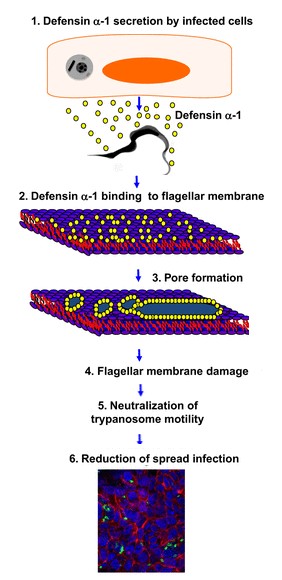Sandbox Reserved 959
From Proteopedia
(Difference between revisions)
| Line 17: | Line 17: | ||
=== Biological role === | === Biological role === | ||
| - | The presence of an unknown microbial cell active the transcription of the alpha defensin gene. When the RNAm is translate the alpha defensin is not active. They bacam active in the golgi, in ich they are biologically cleaved. After these they are stock in the azurophil granule lumen. After the exocytosis, two defensin alpha create a dimer, wich will attack the membran of the microbiaf cell, by the | + | The presence of an unknown microbial cell active the transcription of the alpha defensin gene. When the RNAm is translate the alpha defensin is not active. They bacam active in the golgi, in ich they are biologically cleaved. After these they are stock in the azurophil granule lumen. After the exocytosis, two defensin alpha create a dimer, wich will attack the membran of the microbiaf cell, by the formation of channel. |
This mecanism is sum up in the following picture. | This mecanism is sum up in the following picture. | ||
Revision as of 08:33, 29 December 2014
| This Sandbox is Reserved from 06/12/2018, through 30/06/2019 for use in the course "Structural Biology" taught by Bruno Kieffer at the University of Strasbourg, ESBS. This reservation includes Sandbox Reserved 1480 through Sandbox Reserved 1543. |
To get started:
More help: Help:Editing |
Introduction
Defensins (DEF) are a family of proteins which are involved in host defense in the epithelia of mucosal surfaces such as those of the intestin, respiratory tract, urinary tract, and vagina. They are antimicrobial and cytotoxic. All the protein of the family are distinguished by a cystein motif and are encoded on the chromozome 8.[1]
There are many defensin but in this article we'll focus on the defensin-α-1. It is a polypeptide which is found in the microbicidal granules of neutrophils. It's syntetisize in the paneth cell, which plays a role in the defense process. defensin-α-1 plays a particular role in phagocite-mediated host defense. [2]
| |||||||||||


